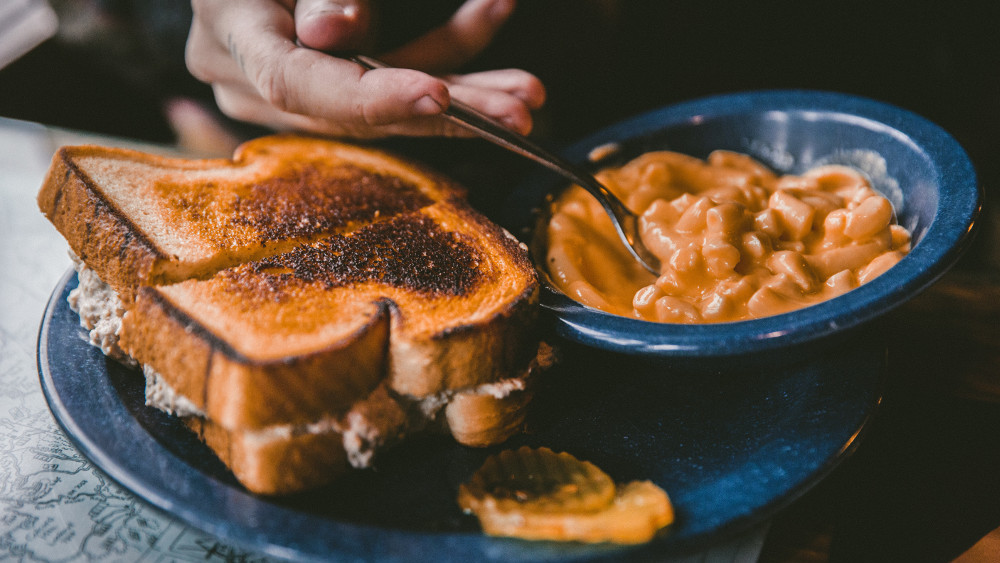The circumstances surrounding death are always a surprise. Even when it isn’t sudden, when it has been expected for weeks – months, even – there is always the shock of absence and loss, and the overwhelming feeling that comes with all of the details that need to be tended to while in the throes of grief.
It’s in those moments that people tend to neglect their own well being, as self-care often ends up as a last priority after taking care of children and sorting out funeral arrangements.
Photos by Jakob Owens via Unsplash Creative Commons
At times like these, people need others to step in and help them through the darkness, and that’s where the meal train comes in. If you haven’t yet heard of this concept, the idea is really quite simple: A group of people gets together to ensure that the bereaved has a constant flow of meals delivered to them so they don’t have to worry about shopping or cooking for a while.
Gather the troops and make a schedule

Photo by NordWood Themes via Unsplash Creative Commons
Generally, a friend or family member who leans towards extroversion and project management should take the initiative to reach out to the social circle and plan a meeting. At this meeting, everyone will decide on a timeline for the train, and who can participate on which days.
Organising a couple of weeks’ worth of food is normal after a death, though some trains last up to a month if the death was sudden, especially if the bereaved is elderly, or widowed with small children.
Once that length of time is determined, it’s recommended that you set up a calendar that can be shared with everyone involved.
Deliveries can be once or twice a day, depending on whether people are providing single meals such as dinners, or are taking care of all cooking needs. You can coordinate with the bereaved person to find out what delivery time would work best for them, but please don’t expect them to be social when you drop the food off; leaving it in a large cooler on the porch may be the easiest thing for them to deal with.
Compile food preferences and sensitivities
Those who know the recipient well should write up a list of the foods that they know are both liked and disliked, as well as any allergies, sensitivities or dietary restrictions. If the meal train is being set up to cook for an entire family, then the list will need to be a bit more comprehensive, as it will have to encompass those same details for children, spouses, special needs family members and so on.
When in doubt, ask; the recipient may be a bit overwhelmed, but you can rest assured that they will prefer to take a moment or two to clarify things such as a hatred of corriander or a gluten allergy rather than be presented with a gorgeous meal they are unable to enjoy.
Mix it up and keep it interesting
Comfort foods are vital for times like these, but comfort comes in many different forms. One cannot subsist on casseroles alone, and when tending to loved ones in need, it’s best to avoid giving them scurvy. A little added organisation can ensure variety and a healthy mix of nutritional intake. Some tips to make that happen:
- On the shared calendar, be sure to post the shared meals you’ll be creating so the recipient isn’t inundated with the same dishes night after night. Pasta dishes are wonderful, but so are enchiladas, stews, soups and stir-fries.
- If you’re cooking for children, please take kid-friendly meals into consideration. Find out from friends and extended family members what the kids like to eat; during difficult times, it’s a lot easier to feed kids without fighting or coercion.
- Remember fresh fruits and vegetables. Salads, smoothies, raw veggies with dips – all are great ideas to pop into the cooler alongside main dishes, and offset possible carb overload.
- If the dish you’re making is easy to freeze, consider making a double batch and putting one portion in a freezer-safe container. Once the meal train is done, there will be fallback options in cold storage for rough days.
- Takeaway can be OK too. In fact, the recipient’s favourite Thai meal or a pizza with a tub of ice cream on the side can be a welcome surprise.
Sometimes, when people are recovering from loss, they will refrain from eating as much as they should, or may feel badly about enjoying certain foods because they feel guilty about experiencing any kind of joy when they should be sorrowful around the clock.
The grieving process takes time, and as people pass through the different stages, it’s important to give them both support and space as needed. Encourage them to eat, reassure them that yes, they need to do so, and that they absolutely deserve small pleasures as they heal.
Ultimately, you have two goals here: Comfort and nourishment. If you can provide these two forms of sustenance for a person who is grieving, rest assured that you are helping them beyond measure as they move forward from a place of despair and hardship. Love heals, and meals created with love nourish body and soul together.

Comments